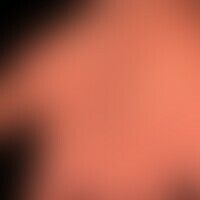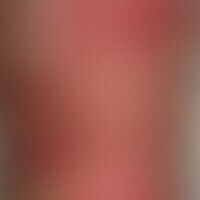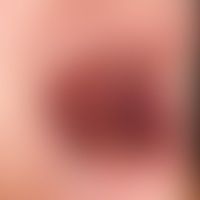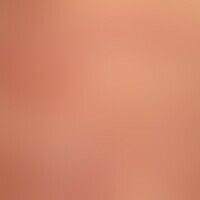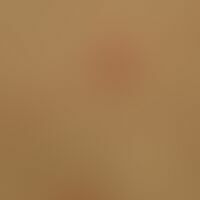Image diagnoses for "red"
876 results with 4456 images
Results forred
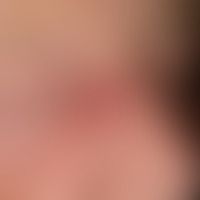
Merkel cell carcinoma C44.L
Merkel cell carcinoma: Solitary, fast growing, asymptomatic, red, firm, shifting, smooth lump with atrophic surface; the appearance in the area of UV-exposed areas is characteristic.

Granulomatosis with polyangiitis M31.3
Wegener's granulomatosis: ulcer of about 5.0 x 5.0 cm in size localized at the left inner malleolus and extending into the subcutis in a 23-year-old woman. in the ulcerous surroundings there is an erythematous rim measuring about 2.5 cm. the rim of the ulcer is bizarrely configured. the ulcer is extremely dolent and yellowish fibrinous.
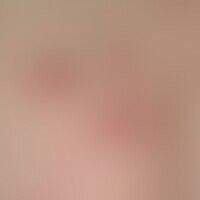
Nummular dermatitis L30.0
Nummular dermatitis: Detail enlargement : Massive itching, solitary or confluent, scratched, red lumps and plaques on the buttocks of a 77-year-old woman.

Lip carcinoma C00.0-C00.1
Lip carcinoma: Known since > 1 year, only growing in layers, hard, not shifting, eroded lump, which covers the entire lip red.
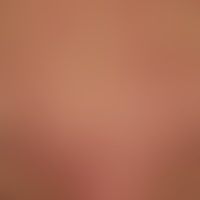
Folliculotropic mycosis fungoides C84.0
Mycosis fungoides follikulotrope: generalised clinical picture; smooth plaques that dissect at the edges, with clear evidence of follicular involvement.
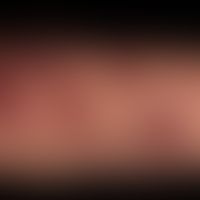
Livedo racemosa (overview) M30.8
Livedo racemosa generalisata: extensive, bizarre, haemorrhagic reticulation of the skin

Facial granuloma L92.2
Granuloma eosinophilicum faciei (Granuloma faciale): Therapy resistant 2.5 cm high, red, surface smooth knot.
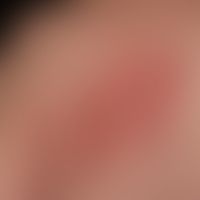
Zoster B02.9
Zoster: in segmental distribution, grouped vesicles and pustules on reddened skin in a 53-year-old man; moderately spontaneous pain.

Psoriasis (Übersicht) L40.-
Psoriasis of the feet: here partial manifestation in the context of generalised psoriasis.
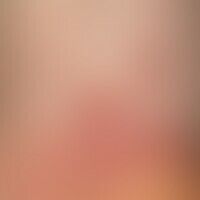
Lichen planus (overview) L43.-
Lichen planus classic type: for several weeks persistent, red, itchy, polygonal, partially confluent, smooth, shiny papules.

Airborne contact dermatitis L23.8
Airborne Contact dermatitis: chronic (>6 weeks) extensive, enormously itching and burning eczema with uniform infestation of the entire exposed facial area including the eyelids.

Basal cell carcinoma ulcerated C44.L
basal cell carcinoma ulcerated: skin change existing for years. initially asymptomatic nodule, increasing surface growth, central ulcer formation. typical for the diagnosis "basal cell carcinoma" is the raised, glassy appearing marginal wall. detailed view.
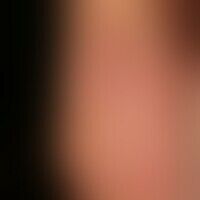
Psoriasis palmaris et plantaris (plaque type) L40.3
Psoriasis plantaris (plaque type): red, massively scaly, markedly indurated plaque on the sole of the foot; yellowish, flat keratoses; there is a marked restriction in walking ability.
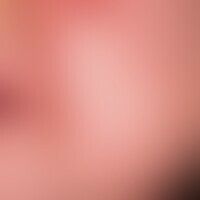
Acne infantum L70.40
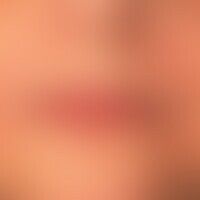
Wrinkle treatment
Wrinkle treatment with filling materials: the ideal filling material is biocompatible, without allergenic potential, has a good long-term result, no side effects and a natural appearance. 8 weeks after injection of an unknown filling material, development of foreign body granulomas, which can be felt as solid deep conglomerates.
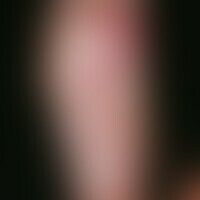
Drug effect adverse drug reactions (overview) L27.0

Cutis marmorata teleangiectatica congenita Q27.8
Cutis marmorata teleangiectatica congenita (localisata) during the course of 1 year.
